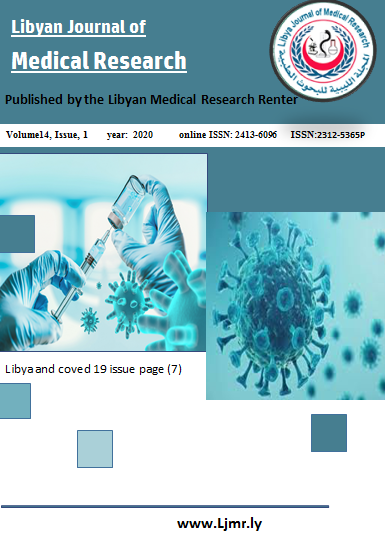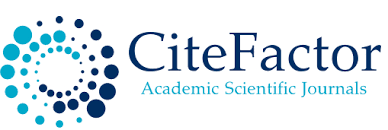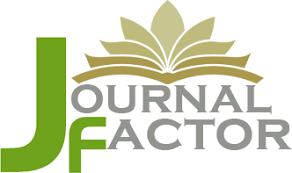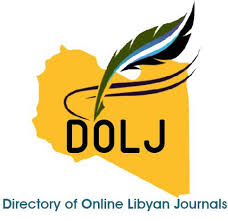Assessment of genetic variation and chemical composition of Origanumspp
DOI:
https://doi.org/10.54361/ljmr.v14i1.01Keywords:
Origanumspp, Essential oil, Gas chromatography–mass spectrometry, Random Amplification of Polymorphic DNA, Amplified fragment length polymorphismAbstract
The study was carried out on 23 entries of Origanumcollected from different areas of south Italy. The 23 entries were characterizedvia determining the chemical composition of their essential oils and genetic variability. The gas-chromatography of the essential oils of oregano accessions allowed the detection of 44 components with the predominance of carvacrol, thymol, linalyl acetate, γ-terpinene, o-cimene, s-caryophylleneand cis-ocimene. A high variability in the main components concentration was revealed except in the case of the accessions 13, 14 and 15 where the linalyl acetate ranging between 51.27 and 60.93%, outlining a new oregano chemotype.Using hierarchical cluster analysis, four main groups of samples were observed. Genetic variability using the RAPD analysis was not able to reveal clear polymorphism PCR patterns useful to distinguish the entries.So that, we decided to conduct further molecular analyses to determine the genetic variation among the entries under investigation, using AFLPs a powerful tool to perform phylogenetic analysis. This technique shows a high capability in detecting genetic variation. Combination between fluorescent system and polyacrylamide gels allows obtaining large number of bands (225 to 557). Finally, thecurrent study shows thatthe Dendrogram of genetic similarity of Origanum is widely variable amongst genotypes of this plant.
Downloads
References
Ietswaart, JK (1980) A taxonomic revision of the genus Origanum (Labiatae). Leiden University Press, The Hague.
Kokkini S,Vokou D, Karousou R (1991) Morphological and chemical variation of Origanum vulgare L. in Greece. Bot. Chron. 10:337-346.
De Mastro G(1997) Crop domestication and variability within accessions of Origanum genus,” in Proceedings of the IPGRI International Workshop on Oregano, S. Padulosi, Ed., pp. 34-48, CIHEAM, Valenzano, Bari, Italy.
Tucker AO, Maciarella MJ(1994) Oregano: botany, chemistry, and cultivation. In: Charlambous G. (ed.) Spices, herbs and edible fungi. Elsevier Science, Amsterdam. pp. 439-456.
Franz C, Novak J (2002) Breeding of Oregano. In: Kintzios S.E. (ed), Oregano. The genera Origanum and Lippia. Taylor and Francis. London. 163-174.
Da Mastro G, Fracchiolla M, Verdini L, Montemurro P (2006)Oregano and Its Potential Use as Bioherbicide. ActaHortic, 723: 335-346 DOI: 10.17660/ActaHortic.2006.723.46. doi.org/10.17660/ActaHortic.2006.723.46.
Castilho PC, Savluchinske-Feio ST, Weinhold S, Gouveia SC (2012) Evaluation of the antimicrobial and antioxidant activities of essential oils, extracts and their main components from oregano from Madeira Island, Portugal Food Control, 23: 552-558.
Ricciardi L, De Giovanni C, DellOrco P, Lotti C, Marcotrigiano AR (2003)Phenotypic and genetic characterization of Cucumis melon L. landraces collected in Apulia (Italy) and Albania, 11-17, 2002: 525-526. Acta Hort. (ISHS), 623: 95-105.
De Mastro G, Ruta G, Marzi V (2004)Agronomic and Technological Assessment of Oregano (Origanum Vulgare Ssp.) Biotypes. ActaHortic. 629, 355-363 DOI:10.17660/ActaHortic.2004.629.46.doi.org/10.17660/ActaHortic.2004.629.46.
Williams JGK, Kubelik AR, Livak KJ, Rafalski JA, Tingey SV (1990) DNA polymorphisms amplified by arbitrary primers are useful as genetic markers. Nucleic Acids Res. 18: 6531-6535.
Vos P, Hogers R, Bleeker M, Reijans M, van de Lee T, Hornes M, Frijters A, Pot J,Peleman J, Kuiper M (1995) AFLP: a new technique for DNA fingerprinting. Nucleic Acids Res. 11:4407-14.
Garcia-Mas J, Oliver M, Gomez-Paniagua H, DeVicente MC (2000) Comparing AFLP, RAPD and RFLP markers for measuring genetic diversity in melon. TheorApplGnent, 101: 860-86.
El-Demerdash ES, Elsherbeny EA, Abdelhakim Y, Salama M, Ahmed MZ. (2019) Genetic diversity analysis of some Egyptian Origanum and Thymus species using AFLP markers. J Genetic Engineering Biotechnol.10.1186/s43141-019-0012-5.
Kosakowska O, Czupa W (2018) Morphological and chemical variability of common oregano (Origanum vulgare L. subsp. vulgare) occurring in eastern Poland. J Herba Pol. 64(1): 11-21.
Downloads
Published
Issue
Section
License
Copyright (c) 2020 H M Abushhewa , A T Abukreba , M S Khalifa , C Lotti, L Ricciardi, V Bracuto, G Brunetti, L Verdini, A A Nass, W R Mohsen, M O B Gumma, G Mastro (Author)

This work is licensed under a Creative Commons Attribution-NonCommercial-NoDerivatives 4.0 International License.
Open Access Policy
Libyan journal of medical Research (LJMR).is an open journal, therefore there are no fees required for downloading any publication from the journal website by authors, readers, and institution.
The journal applies the license of CC BY (a Creative Commons Attribution 4.0 International license). This license allows authors to keep ownership f the copyright of their papers. But this license permits any user to download , print out, extract, reuse, archive, and distribute the article, so long as appropriate credit is given to the authors and the source of the work.
The license ensures that the article will be available as widely as possible and that the article can be included in any scientific archive.
Editorial Policy
The publication of an article in a peer reviewed journal is an essential model for Libyan journal of medical Research (LJMR). It is necessary to agree upon standards of expected ethical behavior for all parties involved in the act of publishing: the author, the journal editorial, the peer reviewer and the publisher.
Any manuscript or substantial parts of it, submitted to the journal must not be under consideration by any other journal. In general, the manuscript should not have already been published in any journal or other citable form, although it may have been deposited on a preprint server. Authors are required to ensure that no material submitted as part of a manuscript infringes existing copyrights, or the rights of a third party.
Authorship Policy
The manuscript authorship should be limited to those who have made a significant contribution and intellectual input to the research submitted to the journal, including design, performance, interpretation of the reported study, and writing the manuscript. All those who have made significant contributions should be listed as co-authors.
Others who have participated in certain substantive aspects of the manuscript but without intellectual input should only be recognized in the acknowledgements section of the manuscript. Also, one of the authors should be selected as the corresponding author to communicate with the journal and approve the final version of the manuscript for publication in the LJMR.
Peer-review Policy
- All the manuscripts submitted to LJMR will be subjected to the double-blinded peer-review process;
- The manuscript will be reviewed by two suitable experts in the respective subject area.
- Reports of all the reviewers will be considered while deciding on acceptance/revision or rejection of a manuscript.
- Editor-In-Chief will make the final decision, based on the reviewer’s comments.
- Editor-In-Chief can ask one or more advisory board members for their suggestions upon a manuscript, before making the final decision.
- Associate editor and review editors provide administrative support to maintain the integrity of the peer-review process.
- In case, authors challenge the editor’s negative decision with suitable arguments, the manuscript can be sent to one more reviewer and the final decision will be made based upon his recommendations.














